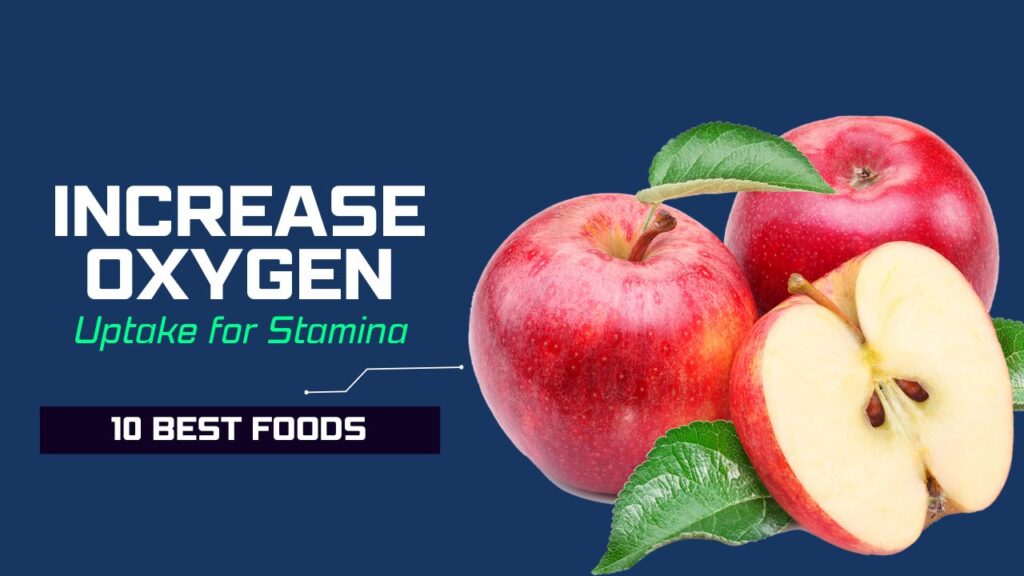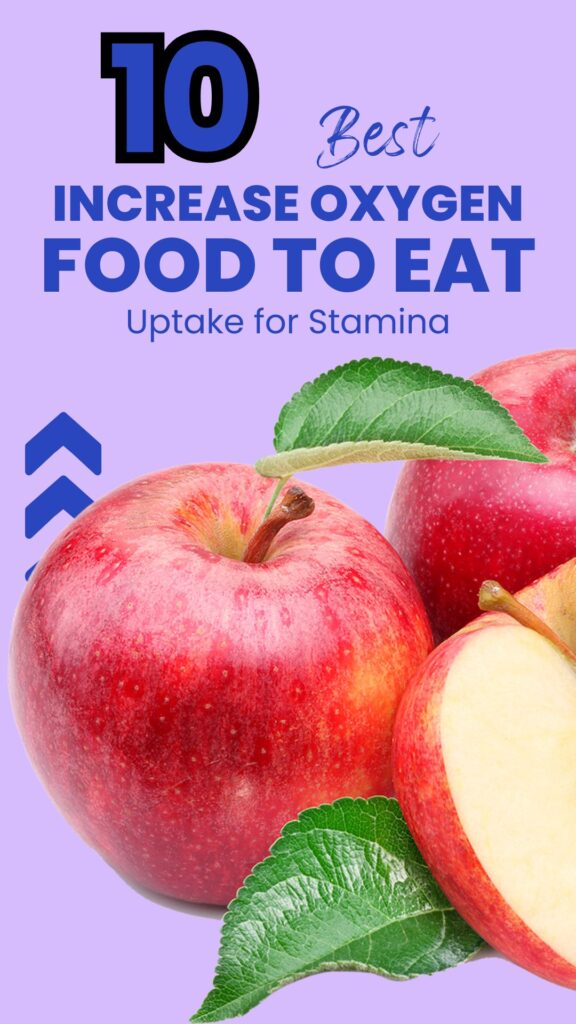Struggling with low energy, breathlessness during workouts, or quick fatigue? The root cause might not always be your training—it could be what’s on your plate.
Oxygen is the fuel that powers every cell in your body, and when your oxygen uptake is optimized, your stamina, endurance, and overall performance can skyrocket.
Do you know that athletes who consume oxygen-boosting foods often report improved running times, better recovery, and greater focus? The secret lies in nutrient-rich foods that enhance hemoglobin levels, improve circulation, and allow your body to transport oxygen more efficiently.
In this article, we’ll explore 10 powerful foods that naturally improve oxygen uptake. You’ll also learn:
- The best ways to eat or use each food.
- Who should include them (and who should avoid them).
- Storage and buying tips to keep nutrients intact.
- Quick do’s and don’ts for maximizing benefits.
- Possible side effects to be aware of.
Let’s dive into the foods that can transform your stamina and energy levels.

Table of Contents

10 Best Foods That Boost Stamina
1. Beets
Beets are often called a “natural performance enhancer.” Rich in nitrates, they improve blood flow and oxygen delivery to muscles, which can significantly boost endurance.
Best Ways to Eat or Use It
- Fresh beetroot juice before workouts.
- Roasted or boiled beets in salads.
- Beet powder in smoothies.
Tip: Pair with citrus fruits (like orange or lemon) to improve iron absorption.
Who Should Eat / Avoid
- Good for: Athletes, people with low stamina, individuals recovering from fatigue.
- Avoid if: You have kidney stones (due to oxalates) or very low blood pressure.
Storage & Buying Tips
- Choose firm, smooth beets without cracks.
- Store unwashed in the fridge for up to 2 weeks.
Do’s & Don’ts
| ✅ Do | ❌ Don’t |
|---|---|
| Drink beet juice fresh | Store juice overnight |
| Pair with vitamin C-rich foods | Overcook as it reduces nitrates |
Possible Side Effects
- May cause beeturia (red urine), which is harmless.
- Excess can cause kidney stone risk in sensitive people.
2. Spinach
This leafy green is packed with iron, magnesium, and nitrates—all essential for carrying oxygen through the bloodstream.
Best Ways to Eat or Use It
- Fresh in smoothies or salads.
- Lightly steamed to retain nutrients.
- Add to omelets, pasta, or stir-fries.
Tip: Pair spinach with olive oil or nuts to improve absorption of fat-soluble vitamins.
Who Should Eat / Avoid
- Good for: Women with low iron, endurance athletes, vegetarians.
- Avoid if: You have kidney issues or gout (due to purines).
Storage & Buying Tips
- Buy crisp, dark green leaves.
- Store in a perforated bag in the fridge, use within 5 days.
Do’s & Don’ts
| ✅ Do | ❌ Don’t |
|---|---|
| Eat raw or lightly cooked | Over-boil |
| Pair with vitamin C foods | Store wet (causes spoilage) |
Possible Side Effects
- May interfere with calcium absorption in excess.
3. Apples
“An apple a day keeps the doctor away”—but did you know it also keeps oxygen levels steady? Apples contain antioxidants like quercetin, which improve lung function and stamina.
Best Ways to Eat or Use It
- Eat raw with skin for maximum fiber.
- Add to oatmeal or salads.
- Blend into smoothies.
Who Should Eat / Avoid
- Good for: Runners, individuals with asthma, office workers needing energy.
- Avoid if: You have fructose intolerance.
Storage & Buying Tips
- Choose firm apples without bruises.
- Store in a cool, dark place or refrigerate for longer freshness.
Do’s & Don’ts
| ✅ Do | ❌ Don’t |
|---|---|
| Eat with peel | Peel (you’ll lose fiber & antioxidants) |
| Store in fridge drawer | Leave in warm areas |
Possible Side Effects
- Excess can cause bloating for people with sensitive digestion.
4. Pomegranate
This ruby-red fruit is loaded with antioxidants and nitrates, which improve circulation and oxygen supply to muscles.
Best Ways to Eat or Use It
- Drink fresh pomegranate juice.
- Sprinkle seeds over salads or yogurt.
Tip: Mix with beet juice for a double oxygen boost.
Who Should Eat / Avoid
- Good for: Athletes, people with high blood pressure, individuals needing better stamina.
- Avoid if: You’re on blood-thinning medications.
Storage & Buying Tips
- Choose heavy fruits with firm skin.
- Store seeds in an airtight container in the fridge for up to 5 days.
Do’s & Don’ts
| ✅ Do | ❌ Don’t |
|---|---|
| Drink fresh juice | Buy sugary packaged juice |
| Eat seeds raw | Store seeds uncovered |
Possible Side Effects
- May interact with certain medications (like statins).
5. Watermelon
Watermelon hydrates and contains citrulline, which improves blood flow and oxygen delivery to muscles.
Best Ways to Eat or Use It
- Eat chilled slices post-workout.
- Blend into smoothies or juices.
Who Should Eat / Avoid
- Good for: Runners, gym-goers, those prone to dehydration.
- Avoid if: You have high blood sugar (eat in moderation).
Storage & Buying Tips
- Choose heavy melons with a creamy yellow spot.
- Store whole at room temp; refrigerate cut pieces.
Do’s & Don’ts
| ✅ Do | ❌ Don’t |
|---|---|
| Eat fresh | Add sugar on top |
| Store cut in fridge | Leave exposed (dries out) |
Possible Side Effects
- Excess may cause bloating due to water content.
6. Citrus Fruits (Oranges, Lemons, Grapefruit)
Citrus fruits are high in vitamin C, which helps your body absorb iron—crucial for oxygen transport.
Best Ways to Eat or Use It
- Fresh orange juice.
- Lemon water in the morning.
- Add grapefruit to salads.
Who Should Eat / Avoid
- Good for: People with anemia, athletes, immune support seekers.
- Avoid if: You have acid reflux or ulcers.
Storage & Buying Tips
- Choose firm, brightly colored fruits.
- Store in a cool, dry place or refrigerate.
Do’s & Don’ts
| ✅ Do | ❌ Don’t |
|---|---|
| Drink fresh juice | Rely on packaged juice |
| Eat with fiber | Discard pulp |
Possible Side Effects
- Excess can erode tooth enamel due to acidity.
7. Oats
Oats are a slow-digesting carbohydrate that keeps energy steady while supporting oxygen delivery with iron and B vitamins.
Best Ways to Eat or Use It
- Oatmeal with fruits and nuts.
- Overnight oats with chia seeds.
Who Should Eat / Avoid
- Good for: Athletes, weight-loss seekers, diabetics.
- Avoid if: You have celiac disease (unless gluten-free oats).
Storage & Buying Tips
- Store in airtight jars in a cool, dry place.
- Choose steel-cut oats for best nutrition.
Do’s & Don’ts
| ✅ Do | ❌ Don’t |
|---|---|
| Add nuts & seeds | Add too much sugar |
| Eat for breakfast | Store in damp areas |
Possible Side Effects
- May cause bloating in sensitive individuals.
8. Lentils
Lentils are rich in iron and protein, supporting hemoglobin production and oxygen circulation.
Best Ways to Eat or Use It
- Lentil soups or stews.
- Add to salads or rice.
Who Should Eat / Avoid
- Good for: Vegetarians, women, people with anemia.
- Avoid if: You have digestive issues with legumes.
Storage & Buying Tips
- Store dry lentils in airtight jars.
- Rinse before cooking to reduce anti-nutrients.
Do’s & Don’ts
| ✅ Do | ❌ Don’t |
|---|---|
| Soak before cooking | Store in humid areas |
| Combine with rice | Eat raw |
Possible Side Effects
- May cause gas or bloating.
9. Garlic
Garlic enhances nitric oxide production, which widens blood vessels and improves oxygen flow.
Best Ways to Eat or Use It
- Crush raw garlic into salads or dressings.
- Add to soups and stir-fries.
Who Should Eat / Avoid
- Good for: People with high blood pressure, athletes.
- Avoid if: You’re on blood-thinning medications.
Storage & Buying Tips
- Store bulbs in a cool, dry place.
- Avoid storing peeled cloves for long.
Do’s & Don’ts
| ✅ Do | ❌ Don’t |
|---|---|
| Crush before use | Eat too much raw (causes stomach upset) |
| Store dry & cool | Refrigerate whole bulbs |
Possible Side Effects
- Strong odor, digestive upset if consumed in excess.
10. Dark Chocolate (85% or Higher)
Surprising but true—dark chocolate contains flavonoids that enhance circulation and oxygen delivery.
Best Ways to Eat or Use It
- A small square post-meal.
- Add grated chocolate to oats or smoothies.
Who Should Eat / Avoid
- Good for: Athletes, students, anyone needing focus.
- Avoid if: You are sensitive to caffeine or sugar.
Storage & Buying Tips
- Store in a cool, dark place.
- Choose at least 70–85% cocoa for benefits.
Do’s & Don’ts
| ✅ Do | ❌ Don’t |
|---|---|
| Eat small portions | Overeat (high calories) |
| Choose dark chocolate | Buy sugary milk chocolate |
Possible Side Effects
- Too much can cause insomnia or weight gain.
Conclusion
Improving oxygen uptake is not only about training harder—it’s about eating smarter. From the nitrate-rich power of beets to the iron-packed strength of spinach and lentils, these foods can make a remarkable difference in stamina, endurance, and recovery.
Adding them to your diet is simple: juice, salad, smoothies, or snacks—you have endless options. Start with one or two foods from this list and notice the difference in your energy levels and performance.
Have you tried any of these oxygen-boosting foods? Share your favorite recipe or snack idea in the comments and inspire others to fuel their stamina naturally!
Frequently Asked Questions (FAQs)
Which food increases oxygen uptake the fastest?
Beetroot is one of the fastest-acting foods for oxygen uptake because of its high nitrate content, which quickly improves blood flow and oxygen delivery to muscles. Drinking beet juice before workouts is especially effective.
What fruits help improve oxygen levels in the body?
Fruits like apples, pomegranates, citrus fruits (oranges, lemons, grapefruit), and watermelon are excellent for enhancing oxygen supply. They provide antioxidants, vitamin C, and nitric oxide boosters that improve circulation.
Is beetroot juice good before workouts?
Yes, beetroot juice is a natural performance enhancer. Drinking it 2–3 hours before exercise can improve stamina, delay fatigue, and support better oxygen uptake during intense workouts.
Can oxygen-rich foods replace supplements?
In many cases, yes. Eating iron-rich and nitrate-rich foods like spinach, lentils, and beets can provide similar benefits to supplements, but whole foods also give fiber, antioxidants, and other nutrients. However, people with diagnosed deficiencies may still need supplements.
Are there any side effects of eating oxygen-rich foods?
Most of these foods are safe, but excess intake may cause issues. For example, too much beetroot may increase kidney stone risk, garlic can thin the blood, and citrus fruits may irritate people with acid reflux. Moderation is key.
How long does it take for these foods to improve stamina?
Some foods like beetroot and pomegranate can show benefits within hours to days, especially when consumed before exercise. Others, like spinach and lentils, build long-term stamina by improving iron stores and overall blood health.
Can these foods help people with breathing problems or asthma?
Yes, foods like apples, citrus fruits, and pomegranates are linked to better lung function and may reduce inflammation in airways. However, they should complement medical treatment, not replace it.
How often should I eat these foods for best results?
Including at least 2–3 oxygen-boosting foods daily in balanced meals is ideal. For athletes, consuming nitrate-rich foods like beets or pomegranates a few hours before training can give an extra stamina boost.
Can children and elderly people eat these stamina-boosting foods?
Yes, most of these foods are safe and beneficial for all ages. However, portion size should be adjusted, and people with medical conditions (like kidney disease or diabetes) should consult a doctor first.










